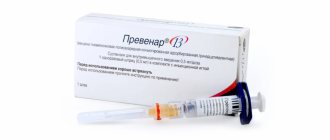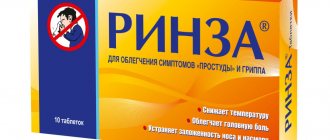Influenza - Data from the World Health Organization (WHO)
Key Facts
- Influenza is an acute viral infection that is easily spread from person to person.
- Influenza circulates throughout the world and can affect anyone of any age group.
- Influenza causes annual seasonal epidemics that peak in winter in temperate climates.
- Influenza is a serious public health problem that causes severe illness and death in high-risk populations.
- The epidemic may have a negative impact on the economy through reduced labor productivity and place undue strain on health services.
- Vaccination is the most effective way to prevent infection.
- Antiviral drugs are available for treatment, but influenza viruses can develop drug resistance.
Review
Seasonal influenza is an acute viral infection caused by the influenza virus.
There are three types of seasonal influenza - A, B and C. Influenza A viruses are divided into subtypes according to different types and combinations of surface proteins of the virus. Among the many subtypes of influenza A viruses, influenza A(H1N1) and A(H3N2) subtypes are currently circulating in humans. Influenza viruses circulate in all parts of the world. Cases of influenza type C are much less common compared to influenza types A and B. For this reason, seasonal flu vaccines contain only influenza A and B viruses.
Signs and symptoms
Seasonal influenza is characterized by a sudden onset of high fever, cough (usually dry), headache, muscle and joint pain, severe malaise (feeling unwell), sore throat and runny nose. Influenza can cause severe illness or death in people at higher risk. The period between infection and illness, known as the incubation period, lasts about two days.
Who is at risk?
Annual influenza epidemics can have a serious impact on all age groups, but children under age two, adults age 65 and older, and people of any age with certain medical conditions, such as chronic heart disease, lung disease, or kidney disease are at highest risk of complications. , blood and metabolic diseases (eg diabetes), or with a weakened immune system.
Transmission of infection
Seasonal influenza is easily transmitted and can spread quickly in schools, nursing homes, businesses and cities. When an infected person coughs, infected droplets become airborne. Another person can inhale them and become exposed to the virus. The virus can also be transmitted through hands infected with the virus. To prevent transmission, people should cover their mouth and nose when coughing with a handkerchief and wash their hands regularly.
Influenza has a global prevalence, with annual incidence rates estimated at 5%-10% among adults and 20%-30% among children. The disease can lead to hospitalization and death, mainly among high-risk groups (very young children, the elderly or chronically ill people).
Prevention
The most effective way to prevent the disease or its severe consequences is vaccination. Safe and effective vaccines have been available and used for more than 60 years. In healthy people, the influenza vaccine may provide moderate protection. However, among older adults, the influenza vaccine may be less effective at preventing illness, but may reduce the severity of illness and reduce complications and death.
Vaccination is especially important for people at higher risk of developing serious flu complications and for people who live with or care for people at high risk.
WHO recommends annual vaccination for the following population groups:
- pregnant women at any stage of pregnancy;
- children from 6 months to 5 years;
- seniors 65 years and older;
- people with chronic diseases;
- healthcare workers.
Influenza vaccination is most effective when circulating viruses closely match those in the vaccine. Influenza viruses are constantly changing, and the WHO Global Influenza Surveillance Network (GISN), a partnership of National Influenza Centers around the world, monitors influenza viruses circulating in people.
For many years, WHO has updated its vaccine composition recommendations twice a year, targeting the 3 most common circulating virus types (two subtypes A and one subtype B of influenza viruses).
World Health Organization (WHO) Fact Sheet No. 211 March 2014
Vaccine INFLUVAK® (Influvac)
Manufacturer: Solvay Biologicals BV, Netherlands
Influenza vaccine, subunit, inactivated
Dosage form:
suspension for intramuscular and subcutaneous administration
Compound:
Influvac® is a trivalent inactivated influenza vaccine consisting of surface antigens (hemagglutinin (HA), neuraminidase (NA)) of influenza viruses type A and B grown in chicken embryos. The antigenic composition of the influenza vaccine is updated annually according to the recommendations of the World Health Organization.
Active substances:
One dose of the vaccine (0.5 ml) contains GA and NA of the following viral strains:
| A/Brisbane/59/2007 / IVR-148, similar to A/Brisbane/59/2007 (H1N1) * | 15 mcg GA |
| A/Uruguay/716/2007 / NYMC X-175C, similar to A/Brisbane/10/2007 (H3N2) * | 15 mcg GA |
| B/Brisben/60/2008, similar to B/Brisben/60/2008* | 15 mcg GA |
* After the name of the strain, the name of the type recommended by WHO for the current epidemic influenza season is given.
Excipients:
potassium chloride, potassium dihydrogen phosphate, sodium phosphate dihydrate, sodium chloride, calcium chloride dihydrate, magnesium chloride hexahydrate, water for injection.
Immunological properties
The vaccine develops specific immunity to influenza viruses type A and B, which is fully formed, as a rule, 14 days after vaccination and lasts up to 1 year.
Purpose
Prevention of influenza in adults and children from 6 months. Vaccination is recommended for all persons and, first of all, for the following categories of the population who are at increased risk if influenza is combined with existing diseases: persons over 65 years of age, regardless of their health status; patients with respiratory diseases; patients with cardiovascular diseases of any etiology; patients with chronic renal failure; patients with diabetes mellitus; patients with immunodeficiency diseases (HIV infection, malignant blood diseases, etc.) and patients taking immunosuppressants, cytostatics, undergoing radiation therapy or receiving high doses of corticosteroids; children and adolescents (from 6 months to 18 years) who have been taking medications containing acetylsalicylic acid for a long time and, therefore, are at increased risk of developing Reye's syndrome due to influenza infection; pregnant women in the 2nd and 3rd trimesters of pregnancy. Pregnant women in high-risk categories should be vaccinated regardless of gestational age.
Contraindications
Hypersensitivity to chicken protein or any other component of the vaccine, severe fever or allergic reactions after previous vaccination with subunit influenza vaccines. Vaccination is postponed until the end of acute manifestations of the disease and exacerbation of chronic diseases. For mild ARVI, acute intestinal and other diseases, vaccination is carried out immediately after the patient has established a normal temperature.
Directions for use and dosage
Dose for adults and adolescents (from 14 years of age):
0.5 ml.
The vaccine is administered once. Dose for children from 6 months.
up to 3 years: 0.25 ml.
Dose for children from 3 to 14 years:
0.5 ml. The vaccine is administered once. For children who have not previously had influenza and have not previously been vaccinated, it is recommended that the vaccine be administered twice with an interval of 4 weeks. Patients with immunodeficiency are recommended to administer the vaccine twice with an interval of 4 weeks.
Mode of application.
Immunization is carried out annually in the autumn. The vaccine is administered intramuscularly or deeply subcutaneously.
Interaction with other drugs and other forms of interaction
Influvac® can be used simultaneously with other vaccines. In this case, vaccines should be administered to different parts of the body with different syringes.
Use during pregnancy and lactation
Current experience shows that Influvac® does not have a teratogenic or toxic effect on the fetus. The Influvac® vaccine can be used during lactation.
Side effects
The vaccine has a high safety profile; allergic reactions, headaches, and decreased platelet levels in the blood are rarely observed. Local reactions may be observed: redness, swelling, pain, hardening at the injection site. There may be a short-term increase in temperature and malaise. Symptoms usually go away on their own without treatment.
Influence on the ability to drive a car and control machines and mechanisms
Influvac® does not affect the ability to drive a car or use machines and mechanisms.
Incompatibility
There are no known cases of incompatibility of Influvac® with other drugs.
Description
Immunization with Influvac vaccine prevents diseases caused by influenza A and B viruses and related strains. This vaccine does not contain live viruses. It is adapted to the mutations of influenza viruses that occur annually.
Children aged 6-36 months are given this vaccine in a dosage of 0.25 ml. Children over 3 years of age, adolescents and adults are given 0.5 ml of Influvac to prevent influenza. The seroprotective level of antibodies required to prevent the development of the disease is achieved within 10 days after vaccination. In this case, immunity lasts for 6-12 months. If a person has already been infected with the influenza virus when the vaccine is administered, the drug does not provide protection against the development of this disease.
Dosage and method of administration
For children from six months to three years, a single dose of the vaccine is 0.25 ml; for older children and adults, the dose is increased to 0.5 ml. Moreover, for children who have not previously been vaccinated, the vaccine doses should be divided into two parts with an interval of a month.
There are no such restrictions for adults. The form of vaccine packaging is a special 0.5 ml dose syringe with a notch to accurately determine half the dose. The syringe has a sterile package designed for safe transportation and storage. The syringe needle causes virtually no pain from the injection, and the very shape of the dose syringe precludes its reuse.
The drug is administered by intramuscular injection. For young children, it is recommended to get an injection in the middle part of the thigh, as a large amount of muscle mass is concentrated there. For older children and adults, the injection is given in the shoulder (deltoid muscle). The vaccine can be administered under the skin, but injections into the buttock are not currently practiced. It is strictly forbidden to administer the vaccine intravenously.
Special conditions
Influvac does not prevent upper respiratory tract diseases that are caused by viruses other than the influenza virus. This vaccine should be administered deep under the skin or intramuscularly. Under no circumstances should this drug be administered intravascularly. Therefore, the injection must be done with extreme caution to avoid the drug entering the vascular bed. The injection should warm to room temperature before administration. After vaccination, a person must remain under medical supervision for 30 minutes.
Who should get the vaccine?
The Influvac vaccine does not contain living virus bodies, its use does not cause any reactions, therefore, the vaccine can be prescribed to children (6 months and older) and adults.
This influvac vaccine is of great importance for the entire population, but, among other things, the use of the vaccine is indicated for the following categories of people:
- for those who constantly suffer from ARVI,
- elderly people (over 65),
- people with cardiovascular disorders,
- people with diabetes mellitus,
- persons with impaired immune system function,
- children for whom the doctor often prescribes aspirin: there is a risk of contracting Reye's syndrome,
- pregnant women (pregnancy period - from 4 years and beyond).
Drug interactions
The effectiveness of this vaccine may be reduced during immunosuppressive therapy and if the vaccine recipient has an immunodeficiency. This medicine should not be mixed with other medicines as its compatibility with other medicines has not been studied.
Immunization with Influvac can be done together with other vaccines, but injections must be given in different parts of the body. It should be borne in mind that the side effects of each of the vaccines administered to a person may be more acute.
How is vaccination carried out?
Vaccination is carried out in a vaccination room, in compliance with all sanitary requirements. All drugs are certified. A certificate for the drug is provided upon request.
Without reminders, before vaccination, the medical worker must show the drug and the expiration date of the vaccine.
Only sterile and disposable instruments are used. The vaccination must be carried out using disposable medical gloves.
On the day of vaccination, the child is examined by a pediatrician and the temperature is measured. In the absence of contraindications, vaccination is carried out. Information about the vaccination performed is entered into the card, vaccination certificate, and detailed recommendations for caring for the child in the post-vaccination period are given.
Before vaccination, the doctor will answer all your questions. Be sure to bring information about previous vaccinations to your appointment!
Please note that vaccination of a child, Mantoux test, Diaskintest can only be carried out in the presence of parents or legal representatives of the child (guardians), or if the accompanying person has a NOTARIZED power of attorney to carry out the manipulation (indicating the drug planned for administration) . Otherwise, vaccination will be denied. We comply with the laws of the Russian Federation.
Only here!
Indications
The indication for use of this vaccine is the prevention of influenza. Vaccination with this drug is recommended before the start of the epidemic influenza season. This vaccine can be used to immunize children from 6 months of age. Annual prevention of influenza using this vaccine is especially recommended for people who are in the following risk groups:
- age over 65 years;
- age from 6 months to 18 years;
- patients with chronic diseases of the respiratory system (including bronchial asthma), chronic renal failure, metabolic disorders (including diabetes mellitus);
- patients receiving radiation therapy, taking cytostatics or corticosteroids;
- patients with immunodeficiency conditions caused by diseases or medications;
- medical workers;
- schoolchildren and students;
- family members of persons at risk for influenza;
- children and adolescents who undergo long-term treatment with drugs containing acetylsalicylic acid.
Why do we recommend buying the Influvac flu vaccine?
Annual flu epidemics have become something familiar and commonplace, but only until someone close to you gets sick.
It’s good if it all ends as it should: in a week, when all the symptoms disappear... But what if it’s the other way around? What if the disease causes serious complications, the treatment of which will be complex, lengthy, and require significant material costs? The Influvac vaccination will help nip this situation in the bud. It minimizes the risk of the disease and its consequences. Every year, more than five hundred thousand people worldwide die from influenza and about five million suffer serious complications. Influenza is an infectious disease of a viral nature, transmitted by airborne droplets from a sick person to a healthy person, who, under the influence of the virus, will also soon become sick. Mass vaccinations against influenza are quite effective: they can reduce morbidity rates by two to three times. This is especially important when it comes to the categories of the population most susceptible to the development of complications: children, elderly patients and people with weakened immune systems.
Flu vaccination in the Russian Federation is not mandatory and is not included in the national vaccination calendar. Despite this, many patients of Doctor Nearby clinics prefer to play it safe and protect themselves and their children from the disease.
Contraindications
There are the following contraindications to vaccination with Influvac:
- acute infectious disease;
- stage of exacerbation of a chronic disease;
- hypersensitivity to the substances included in the vaccine;
- allergy to egg white, which is used in the production of the vaccine;
- first trimester of pregnancy;
- age up to 6 months;
- body temperature is above 37 degrees.
The effect of this vaccine on the fetus and pregnant women has not been sufficiently studied. The decision on the need to use this vaccine during lactation is made by the attending physician. For mild ARVI and acute intestinal disorders, the vaccine can be administered immediately after body temperature normalizes.
"Influvac" - what is it?
Influvac is a flu vaccine that contains surface antigens of the strains.
Influvac is manufactured in the Netherlands, and the official supplier is Abbott Biologicals BV.
Every year, depending on which type of influenza is expected, the composition of the influvac vaccine . For this reason, the validity period can be found in the developer's instructions. Doctors recommend getting vaccinated annually.
influvac manufacturer
Side effects
After administration of the vaccine, the following side effects are possible:
- increased body temperature and general malaise, itching, rash, headache, redness and swelling at the site of vaccine administration - these symptoms disappear within 1-2 days;
- convulsions, vasculitis, neuralgia are manifestations that occur very rarely;
- anaphylactic shock – occurs extremely rarely.
Vaccination with Influvac may cause false positive results in serological tests when using the ELISA method, which are done to determine the presence of antibodies against hepatitis C and HIV-1, which is explained by the immune response to the vaccine.
Adverse reactions and additional information about the drug
Adverse reactions from the Influvac vaccine are very rare, although they do occur in some people. A negative reaction to the drug manifests itself in the form of redness and painful compaction at the injection site. Chills, fever, headache and general weakness of the body are also possible. Allergic reactions are not typical for this vaccine. There was also no effect of the drug on the ability to drive a car or operate complex machinery.
Vaccination with Influvac is recommended annually in the autumn due to the seasonal nature of influenza. The vaccine provides protection only against three strains of influenza or against variants of the virus that are similar to them.
If the disease has already affected a person (including during the incubation period), or the strain differs from the composition of the vaccine, it will not help the patient. In addition, Influvac does not prevent the occurrence of diseases that are very similar in symptoms to the flu, but are caused by other pathogens.
Finally, you should always remember the seasonal nature of the flu, which makes Influvac effective only for one year. The next year, the strains of the virus usually change, so the vaccination must be repeated again. By the way, drug manufacturers monitor forecasts for the development of the disease and annually change the composition of the vaccine in accordance with the expectations of certain strains.
You cannot use Influvac on your own. The decision to vaccinate with this drug is made by a doctor after an examination to identify acute and chronic diseases. If the disease is infectious in nature and is easily tolerated by the patient, vaccination can be carried out as prescribed by a doctor. In acute diseases, the temperature should first be normalized.
Reviews about Influvac
Vaccination is recognized by domestic and foreign researchers as the leading means of preventing influenza. First of all, because it significantly reduces the spread of infection and reduces the number of severe complications. This vaccine has been produced since 1950. The company constantly monitors its quality. Extensive application experience confirms the presence of a favorable safety profile. Clinical studies on this subject are conducted every year and serious adverse reactions are monitored and analyzed.
Every 5 years, the company publishes a review devoted to the experience of its use, and over all the years it has been concluded that the vaccine has weak reactogenicity and does not cause significant adverse reactions. It is subunit vaccines , being a modern generation, that have good immunogenicity and weak reactogenicity.
Influvac is characterized by fairly high rates of anti-epidemic and preventive protection. Even if vaccinated people get the flu, it is mild and without complications. All these points are reflected in the reviews.
- “... We do influvac for the flu with the whole family every year. There have never been any reactions, I think that the effect is obvious - everyone at work had the flu (some milder, some more severe) except me.”
- “... We make it for ourselves and our child every year. Everything is fine, no reactions.”
- “... We are getting vaccinated as a family. We don’t get the flu.”
- “... I’ve been vaccinating my daughter every year for 10 years now, and I’ve never had the flu. The youngest son was treated for 2 years in a row - there was no flu or severe ARVI either.”
- “... I did it for children, but I didn’t feel any difference - they still hurt.”
Use of Influvac for children and during pregnancy
As mentioned above, the vaccine is given to children over 6 months of age. Children are most sensitive to vaccination.
In addition to high fever, the primary indicators for vaccination are cough and nasal congestion. As a rule, this applies to infants. This condition can haunt the vaccinated person for several weeks.
We remind you once again that the vaccine can only be used by pregnant women if they become pregnant after the second trimester.
The use of the vaccine is absolutely safe for the child in the womb. Even if a woman belongs to a certain risk group, vaccination is possible in any case, regardless of the period of gestation of the child. In addition, the vaccine can be used even if breastfeeding.
How does Influvac work?
Antigens help elicit a response from the immune system. After 14 days, the corresponding antibodies accumulate in the body. People who get the flu vaccine receive the necessary antibodies along with it.
There is a lot of information that after the vaccine the risk of contracting influenza or acute respiratory infections decreases. From the moment of vaccination until the formation of strong immunity, it will take 14 days, after which the work of the immune system maintains its quality throughout the year. The best alternative may be vaccination at the very beginning of the autumn period.





